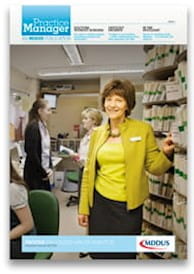EXPLETIVE deleted! We’ve all done it; pricked a finger while sewing on a button, mending a seam, or carrying out one of a myriad of everyday household tasks using a needle or other sharp implement.
But while the vast majority of these accidents are inconsequential and can be dealt with using water, pressure and occasionally a plaster, it’s completely different for healthcare workers.
Healthcare professionals use syringes, scalpels and a variety of sharp implements on a daily basis in the course of their work. Whether it’s taking blood, giving a vaccination, a pain-killing injection, or carrying out a major operation, doctors, dentists and nurses are at significant risk of serious injury and illness throughout their working lives.
European estimates indicate that more than one million needlestick injuries take place in a medical setting across Europe each year. Of these, UK trade unions estimate that 100,000 UK healthcare workers are injured each year. Any such injury can result in the injured party contracting one of more than 20 life-threatening viruses, including Hepatitis B, C and HIV.
Reducing the number of injuries from needle-stick and sharp instruments has been on the European Union’s agenda for the last 10 years. The EU’s concern culminated in March 2010 with the passage of a European Directive requiring member states to take action by 2012 with the aim of cutting sharps injuries in healthcare by 25 per cent. The directive focuses on practical steps which employers will be required to implement in order to achieve the target. It makes clear that risk management is the key to reducing injuries from sharps.
That means making sure that the equipment supplied is the safest available, that a full risk assessment has been carried out to identify any dangers which can be reduced or eliminated, that work procedures are designed to keep the workforce as safe as possible, that appropriate arrangements are in place for the safe disposal of used sharps and, crucially, that staff are fully trained in the safe use of sharp instruments.
It is estimated that around 40 per cent of injuries take place during a medical procedure, and a further 40 per cent after the procedure has been carried out. The key causes include:
- recapping, bending, or breaking needles
- inserting a needle into a test tube or specimen container and missing the target
- injury from a person carrying unprotected sharps
- sharps that are present in unexpected places, such as linens
- during complex surgical procedures
- handling or disposing of waste that contains used sharps
- patients moving suddenly during injections.
The EU is particularly concerned with the recapping of needles, especially when two hands are used for the procedure. It proposes that recapping should be banned immediately. Two-handed recapping is more dangerous because of the co-ordination required, and the possibility of one or other hand or arm being nudged. Single-handed recapping is safer because only one limb is involved, and a nudge or bump will affect the whole movement.
The directive also requires workers (including students) who are at risk of sharps injury to be offered free vaccinations where a vaccine is available. Given the concerns over the safety of some vaccines, those being offered vaccination will also have to be given a full explanation of the pros and cons of vaccination.
Another risk reduction measure that will be encouraged is greater use of personal protective equipment (PPE). There are limits to the effectiveness of PPE during medical procedures because the kinds of material that would prevent an injury would also tend to restrict the mobility required to carry out many procedures. During the disposal phase, however, where dexterity is much less of an issue, consistent use of PPE will certainly reduce the extent of injuries.
It is important to note that many of the requirements of the EU directive are satisfied by procedures already in force in the UK, and the impact of the directive on the protection of healthcare professionals will be limited. Having said that, if the unions’ estimate of 100,000 annual UK sharps injuries is accurate, there is clearly scope for improvement.
It is impossible to pin down exactly how many such injuries take place in the UK each year because the main reporting mechanism, RIDDOR, only requires serious injuries and those which result in an absence from work for more than three days to be reported. The many branches of the UK’s medical and dental services use a wide variety of approaches to collating information about injuries at work.
There’s clearly no possibility of eliminating sharps injuries altogether, but the hope is that by encouraging best practice, and emphasising the importance of consistency, the numbers of healthcare staff who are injured at work will reduce significantly.
Thomas Elliot, Health and Safety Manager, Law At Work
Law At Work is MDDUS preferred supplier of employment law and health and safety services. For more information and contact details please visit http://www.lawatwork.co.uk/
This page was correct at the time of publication. Any guidance is intended as general guidance for members only. If you are a member and need specific advice relating to your own circumstances, please contact one of our advisers.
Read more from this issue of Practice Manager

Save this article
Save this article to a list of favourite articles which members can access in their account.
Save to library
